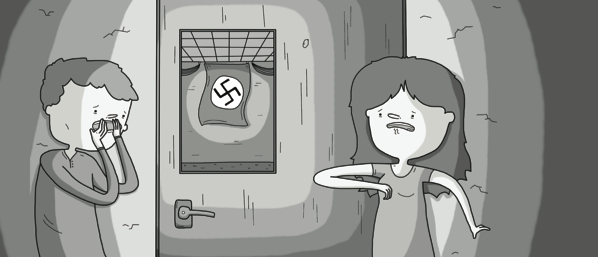Assumptions only lead to confusion

Students should take advantage of every learning opportunity presented. Often these real-life experiences help students to better grasp concepts.
November 13, 2014
Some students walking through the C3 hallway during fourth hour Oct. 8 were shocked to see Nazi flags hanging from the ceiling of the C350 classroom. Without any type of explanation, some students complained to the administration.
The display was part of an IB History project involving the re-enactment of propaganda strategies used by the Nazis to gather support and to justify their mass genocide.
The group presenting the project consisted of approximately one-third of the class, including students of varied religious and racial backgrounds. Students were given the option to sit out during the presentation if they felt uncomfortable with the subject matter.
Even though the flags were only used during the class, they were on display the entire day with no explanation of their purpose posted outside the classroom. Thus, students who walked by the classroom did not understand the context in which they were being used.
For the students who participated in the re-enactment, the exposure to propaganda provided new insight into the rallies promoting the Nazi agenda common in the 1930s and ’40s. It served as a way for students to learn from a real-life experience rather than a second-hand narrative.
The major shortcoming of this project was the visible and unexplained display of Nazi flags in a central classroom. While confusion over the event is understandable, it was unreasonable to assume the school had any purpose aside from education.
Many students find this topic sensitive and have a personal connection to the events that occurred under the Nazi regime. It is understandable that seeing the flags openly displayed without an explanation caused outrage.
While this presentation may have caused some people discomfort, lessons like this should be encouraged, not criticized. Instead of using typical teaching methods like textbook readings, this project instead gave students the opportunity to see the events from a new, realistic perspective.
However, if a class is to present on a controversial topic, the teacher or students involved with the project should post a sign explaining their intentions.
Moreover, if students are worried about a lesson’s content or a classroom display, they should ask for clarification from teachers or administrators. Students and staff should avoid jumping to conclusions.



